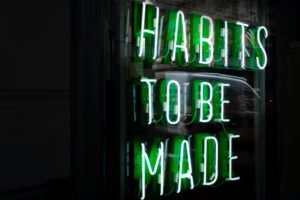Do you know what annoys me? When I go into an organization, and they say their goal is to delight customers at every moment of contact. Honestly, it sounds exhausting, for both the team and your customers. After all, how much joy do you need to buy paper towels?
Another area exists to channel all that enthusiasm instead. There is a significant connection between successful Customer Experiences and the amount of effort they require from customers. We discussed this idea of Customer Effort in a recent podcast, and its related measurement, the Customer Effort Score.
So, What is Customer Effort and a Customer Effort Score?
Customer Effort is forcing customers to think about something. By thinking, I mean rational thinking.
We all have two ways that we make decisions and process data. One is intuitive, meaning easy for us to do, and automatic with few drags on our cognitive resources. The other is rational, which is deliberate and intricate and consumes a lot of energy.
However, even though they are available to us, we don’t want to have to use our cognitive resources. This reluctance comes at us from an evolutionary level.
Many years ago, sustenance was challenging to obtain. Humans adapted to conserve energy as a result. The two ways of thinking I described were part of this adaptation to conserve energy. Regarding cognitive effort, we humans want to save it up if we need it later to escape from a predator. This perspective has served us well as a species for tens of thousands of years. Therefore, it would be best to incorporate these needs for simplicity into our experiences.
 Another way we conserve energy is to create habits. The automatic and intuitive side of our decision-making governs habitual behavior. So, we develop habits, to avoid thinking about doing things and making a tremendous effort. For example, when you drive home at night from work and walk in your front door, you might not remember pulling off the freeway. You did pull off the highway; you just don’t recall doing it. However, you drive that route so often, it’s automatic and handled by your cognitive auto-pilot, habit, which is governed by the Intuitive System of your thinking.
Another way we conserve energy is to create habits. The automatic and intuitive side of our decision-making governs habitual behavior. So, we develop habits, to avoid thinking about doing things and making a tremendous effort. For example, when you drive home at night from work and walk in your front door, you might not remember pulling off the freeway. You did pull off the highway; you just don’t recall doing it. However, you drive that route so often, it’s automatic and handled by your cognitive auto-pilot, habit, which is governed by the Intuitive System of your thinking.
However, when you were learning to drive, you had to concentrate on pulling off the freeway. The Rational System of your thinking would have “taken the cognitive wheel.” Getting off the highway would have been something you remembered well, especially if you were experiencing a strong emotion at the time (e.g., fear, stress, panic, exhilaration). Back then, you were also using many of your cognitive resources to avoid crashing your parents’ car. As you gained experience, however, you relaxed a bit and let your automatic and intuitive thinking take over to drive the car home.
So, customers want to have an effortless experience. Therefore, your Customer Experience should spend as little customer energy as possible.
Or, I should say, you want this experience most of the time.
Another way we conserve energy is to create habits. The automatic and intuitive side of our decision-making governs habitual behavior. So, we develop habits, to avoid thinking about doing things and making a tremendous effort.
It turns out that there are instances where a little effort or friction can improve an experience. For example, the American Express Centurion Card experience has some friction. You can’t apply for it; American Express offers it to you. American Express only offers the Centurion Card to people who spend considerable amounts of money. The card is hard to get, has many obstacles to obtaining it, and, as a result, has much status attached to it. There are many benefits, but one of the significant ones is it is a black card made of titanium. When you plop it down on the restaurant table, it will make a loud clang, which would be sound signaling to everyone seated there that you have a lot of money and status.
However, this successful friction-laden experience is not the norm, but the exception for a specific situation. Most times, customers want an easy and automatic experience that doesn’t require much thinking.
A Customer Effort Score measures on a scale of how easy it was for customers to interact with your organization. Like the Net Promoter Score®, the Customer Effort Score suggests that you ask your customers a question, which, in this case is “How easy was it for you to interact with Company XYZ?” Then, your customers rate your experience on a scale of difficulty.
So, What Does All That Have to Do with Customer Effort?
We believe in the importance of things feeling natural for customers. Humans have an imperative to conserve resources, and that includes those needed for cognitive effort. In other words, you want to make things easy for people as a general rule, with few exceptions.
To a certain extent, the concept of relieving Customer Effort is a bit of a no-brainer. If you make something complicated, customers don’t have a good time and won’t regularly buy from you. However, authors in Harvard Business Review (HBR) Matthew Dixon, Karen Freeman, and Nicholas Tobin have more to say about the concept of Customer Effort in their article, “Stop Trying to Delight Your Customers.” They have five principles that can help you reduce the Customer Effort in your experience, which include:
1. Don’t just resolve the current issue; head off the next one. I like this principle because it addresses your immediate problem and solves a future issue before it becomes a problem. The proactive nature of freeing up future obstacles for your customers is essential when you want to reduce Customer Effort.
2. Arm reps to address the emotional side of customer interactions. It is interesting to note here that 24 percent of repeat calls in their study stems from an emotional disconnection between customers and representatives. It reminds me of our work with an insurance company. We changed the line the new policy representatives said from, “You should receive your policy documents in five working days,” to “You will receive your policy documents in five working days.” The first version did not address the emotional needs of the new policyholders; there was uncertainty, which often caused them to call in after a couple of days to check on the documents whereabouts. By changing the one word from should to will, we reduced the call volume of these new policyholders from a 76 percent call-back rate to a 6 percent call-back rate.
3. Minimize channel switching by increasing self-service channel stickiness. Organizations train customers on how to do things. I’m learning to play the guitar, and I’ve been downloading music. The website I use is a bit clunky, but I learned that if I go to this weird place on the site and emphasize “word choice,” I can find what I want. It’s not intuitive or natural, but since I have made mistakes trying to find the music before, I have learned where it is now. My point is that we train our customers to interface with our systems, so designing them frictionless is essential. Moreover, it is best to recognize that any changes are disruptions to customers. Therefore, ensure that the net benefits to your most valuable customers are worth the hassle of this disruption before making them.
4. Use feedback from disgruntled or struggling customers to reduce Customer Effort. I hope this principle is a no brainer for most of you. Customer feedback is essential to fostering customer-driven growth from your experience. It points out the problem for you.
5. Empower the front line to deliver a low-effort experience. Company policies get in the way of the front-line team, limiting what the employee can do, which then places obstacles for customers to overcome in the experience. However, giving your front-line employees the power to solve problems is excellent for a low-effort experience. For example, the Ritz Carlton gives each of its employees up to $2,500 to resolve customer issues. The Ritz Carlton empowers their team to use their head and make decisions for the customer that will make it easy and effortless, thereby providing a better experience.
Most times, customers want an easy and automatic experience that doesn’t require much thinking.
But Wait! There’s More!
Those are the five principles the HBR article shared. I have a couple more that I would add to the list.
6. Think about the interactions with the customers that drive the most value for you. We want to make our experience easy. So, you should choose the part of your experience to simplify that will drive the most value. Consider the unmet needs in your industry. Could simplifying something in your experience fulfill the customers’ unmet need to give you a competitive advantage?
7. Remember, it doesn’t pay to be logical if everyone else is being logical. We did a two-part podcast a few weeks back with Rory Sutherland, Vice Chairman of Ogilvy UK, where he shared 11 rules from his book, Alchemy: The Surprising Power of Ideas That Don’t Make Sense. Sutherland explains that if everybody in your industry is conducting business in a certain way, that doesn’t mean it’s the only way to do it. Sutherland says that by experimenting, you can see if there is a different way to do things that works for customers and creates competitive differentiation. Moreover, research helps to uncover these unmet hidden needs that you can address with your improved experience. Our Emotional Signature® research measures the emotional engagement you have with your customers and ways you can increase it by giving them what they want, even when they don’t know it themselves.
What Should You Do With These Principles?
 If we do all the things on the list, we reduce friction. If we make things easy, it shows we respect our customers’ time and also avoids the emotional problems that can result when customers do not feel respected and appreciated. Also, the Customer Effort Score measures your progress toward making your experience easy for people.
If we do all the things on the list, we reduce friction. If we make things easy, it shows we respect our customers’ time and also avoids the emotional problems that can result when customers do not feel respected and appreciated. Also, the Customer Effort Score measures your progress toward making your experience easy for people.
I also appreciate how these principles address the emotional side of customer interaction. It is excellent to consider how you can plan for the emotional side of the experience and train people to manage it.
The provocative title of the HBR article, “Stop Trying to Delight Your Customers,” is excellent because it is at once thought-provoking and sound advice. When you want to delight customers every step of the way, it is exhausting, and it also addresses the wrong issues.
Don’t get me wrong, though; it’s great to delight customers. If you give them candy at check-in or brighten your space to be more inviting or train your employees to smile more, there is nothing wrong with any of that. However, if your interaction requires much Customer Effort, then you are missing the point. If you do these seven things, there’s an excellent chance your customers will be happy with you—and perhaps even delighted.
To hear more about this idea in more detail, listen to the complete podcast here.
Think reading is for chumps? Try my podcast, The Intuitive Customer instead. We explore the many reasons why customers do what they do—and what you should do about it. Subscribe today right here.
Colin Shaw is the founder and CEO of Beyond Philosophy, one of the world’s leading Customer experience consultancy & training organizations. Colin is an international author of six bestselling books and an engaging keynote speaker.
Follow Colin Shaw on Twitter @ColinShaw_CX


